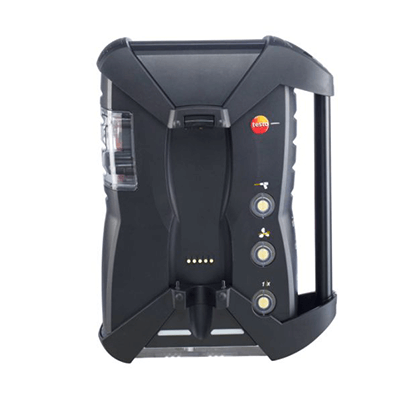What Is an Exhaust Gas Analyzer?

An exhaust gas analyzer is a device used to analyze the components of exhaust gases.
Toxic substances such as sulfur oxides and soot generated when fuel or raw materials are burned are called soot.
Smoke and soot generating facilities are required to measure and record the concentration and volume of soot and smoke continuously in their flue gas. Therefore, facilities that generate soot and smoke are required to use exhaust gas analyzers to analyze and record the composition of exhaust gases.
It is also used as an indicator for improving combustion efficiency. In particular, fluorinated gases are widely used in the manufacture of semiconductors and liquid crystal displays. Fluorinated gases have a global warming potential 10,000 times greater than that of carbon dioxide, so reducing emissions is a challenge for the World Semiconductor Conference. Exhaust gas analyzers may be used to measure the concentration of exhaust gases as an indicator of reducing the amount of exhaust gases.
Uses of Exhaust Gas Analyzers
Exhaust gas analyzers are used in industrial applications. The following are examples of applications:
- Measurement of exhaust gas concentration in boilers and industrial waste incinerators
- Measurement of exhaust gas concentration from sludge incinerators and waste incineration facilities
- Measurement of hydrogen generation in hydrogen generators
- Measurement of the amount of gas generated by oxygen plants and gas generating plants
- Measurement of fluorine gas concentration in semiconductor manufacturing facilities
- Monitoring the amount of oxygen blown into iron and steel facilities
Measurement by exhaust gas analyzers is essential to reduce air pollutants and protect the environment.
In addition, monitoring the amount of oxygen blown into iron and steel facilities also contributes to quality control.
Principle of Exhaust Gas Analyzers
The principle of exhaust gas analyzers differs depending on the type of analyzer, but flue gas analyzers capable of simultaneously measuring multiple components are used for exhaust gas control. Flue gas analyzers, sample and measure exhaust gas in the following order:
1. Primary Filter
A primary filter is inserted into the flue to sample the gas. The purpose of installing the primary filter is to filter out large dust particles in the sample gas while heating it and to prevent clogging due to moisture condensation. Gas that has passed through the primary filter is introduced into the main unit of the exhaust gas analyzer through conduits, such as Teflon tubes or SUS tubes.
2. Drain Separator/Mist Catcher
The sample gas introduced into the exhaust gas analyzer is removed from moisture by a drain separator or mist catcher. The purpose is to prevent corrosion and clogging of the subsequent equipment. The mist catcher is one of the parts that must be replaced periodically.
3. NO Converter
The NO converter is used to measure NOX. If NOX is not measured, the NO converter is not included.
4. Secondary Filter
A secondary filter is used to further remove soot and other contaminants from the sample gas. Paper or Teflon paper is used as the secondary filter.
5. Air Pump
The moisture-removed sample gas is pressurized by an air pump and delivered to the analysis unit. Diaphragm pumps are generally used as air pumps. A flowmeter is installed at the rear of the air pump to confirm that the air pump is drawing enough gas.
6. Analyzer Unit
Inside the analyzer unit, sample gas is introduced into capillary piping or the like to measure various components. For simultaneous measurement of multiple components, the infrared absorption method or magnetic force method is utilized for analysis.
Types of Exhaust Gas Analyzers
There are several types of exhaust gas analyzers, and they are used according to the components to be measured. The following are typical types of exhaust gas analyzers.
1. Thermal Conductivity Method
Measurement is made using the difference in the thermal conductivity ratio of gases. Two types of gases, a sample gas and a comparison gas, are measured in comparison, and the concentration is detected as a change in electrical resistance based on the change in thermal conductivity.
2. Infrared Absorption Method
There are two types of infrared absorption methods: the double-beam method, which detects gas concentration by comparing a sample cell with a reference cell (blank), and the single-beam method, which detects only the sample gas by exposing the sample gas to infrared rays and detecting the amount of infrared absorption as an electrical signal with a mass flow sensor.
3. Magnetic Force Method
This method is used to measure oxygen components. When the sample gas enters the cell, oxygen molecules are attracted by the magnetic field and the force corresponding to the oxygen concentration is converted into an electrical signal for detection.
4. Zirconia Method
This method is used to measure oxygen components. Using the conductivity of the zirconia element, which allows only oxygen ions to pass through at high temperatures, a comparison gas and sample gas flow through it, and the electromotive force of the oxygen concentration cell generated at the electrode is detected.